When it comes to maintaining a thriving garden, many gardeners instinctively reach for chemical pesticides at the first sign of trouble. However, nature has already provided us with an elegant solution to pest management – beneficial insects. These helpful garden allies work tirelessly to control pest populations, pollinate plants, and contribute to the overall health of your garden ecosystem. By harnessing the power of these beneficial insects, you can create a balanced, self-regulating garden that produces bountiful harvests without relying on harmful chemicals. This approach not only protects your plants but also preserves the delicate environmental balance that supports wildlife and human health alike.
Understanding the Beneficial Insect Ecosystem

A healthy garden functions as a complex ecosystem where various organisms interact in a delicate balance. Beneficial insects play crucial roles within this system, from predators that control pest populations to decomposers that break down organic matter into nutrients for plants. Each species occupies a specific ecological niche, contributing to the overall resilience and productivity of your garden. Understanding these relationships is key to successful organic pest management, as it allows you to create conditions that attract and support the insects that benefit your particular garden needs. By working with nature rather than against it, you’ll find that your garden becomes increasingly self-regulating over time, requiring less intervention and producing stronger, healthier plants.
Ladybugs: The Classic Garden Ally

Ladybugs, or lady beetles, are perhaps the most recognizable beneficial insects in the garden world, with their distinctive spotted appearance making them a favorite among gardeners of all ages. A single ladybug can consume up to 5,000 aphids in its lifetime, making these colorful beetles powerful allies in controlling some of the most damaging garden pests. Beyond aphids, ladybugs also feed on mealybugs, scale insects, and mites – all common plant destroyers that can quickly devastate crops if left unchecked. To attract ladybugs to your garden, consider planting dill, fennel, cilantro, caraway, and other plants with umbrella-shaped flowers that provide both nectar for adult ladybugs and habitat for laying eggs. You can also purchase ladybugs for release in your garden, though it’s important to create a hospitable environment with plenty of food sources and shelter to encourage them to stay.
Lacewings: Voracious Aphid Predators
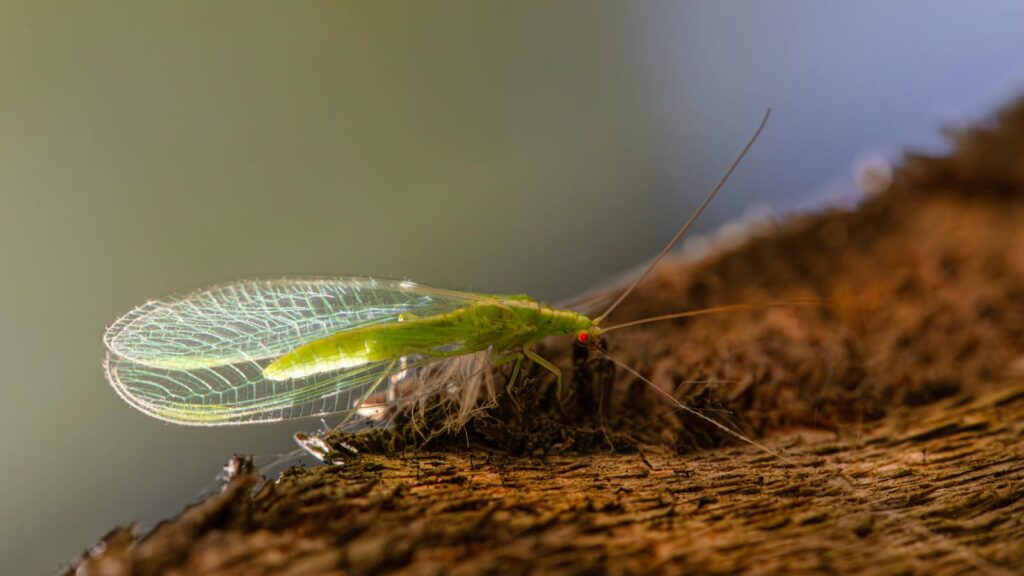
Green lacewings are remarkable beneficial insects that undergo a fascinating transformation throughout their lifecycle, changing from voracious predators in their larval stage to delicate, net-winged adults. Lacewing larvae, often called “aphid lions,” are especially valuable in the garden because they consume large quantities of soft-bodied pests including aphids, thrips, mealybugs, and even small caterpillars. A single lacewing larva can devour up to 200 aphids or other small insects per week, making them one of the most efficient natural pest controllers available. Adult lacewings feed primarily on nectar, pollen, and honeydew, so maintaining flowering plants throughout the growing season helps support their complete lifecycle. Plants like daisies, yarrow, and cosmos are particularly attractive to adult lacewings and will encourage them to lay eggs in your garden where their predatory offspring can help manage pest populations.
Praying Mantids: The Garden’s Patient Hunters
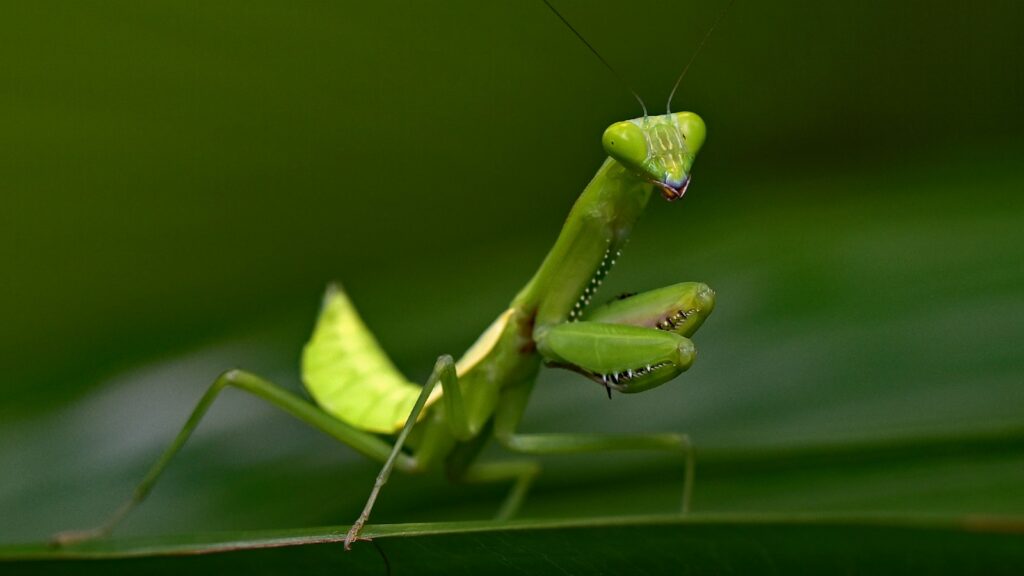
Praying mantids stand out as some of the most distinctive and fascinating beneficial insects, with their triangular heads, bulging eyes, and characteristic front legs held in a prayer-like position ready to strike. These patient predators are ambush hunters that remain motionless for long periods, waiting for prey to come within striking distance before snatching it with lightning-fast reflexes. Mantids are generalist predators that consume a wide variety of garden pests including caterpillars, beetles, grasshoppers, and even other mantids – making them valuable allies in controlling numerous pest species. While mantids don’t discriminate between beneficial and harmful insects in their diet, their overall impact on the garden ecosystem is positive, helping to maintain balance among insect populations. Mantid egg cases, called oothecae, can often be found attached to garden structures or plant stems in late fall and winter, with each case containing dozens or even hundreds of young mantids that will hatch in spring.
Ground Beetles: Nighttime Pest Patrol
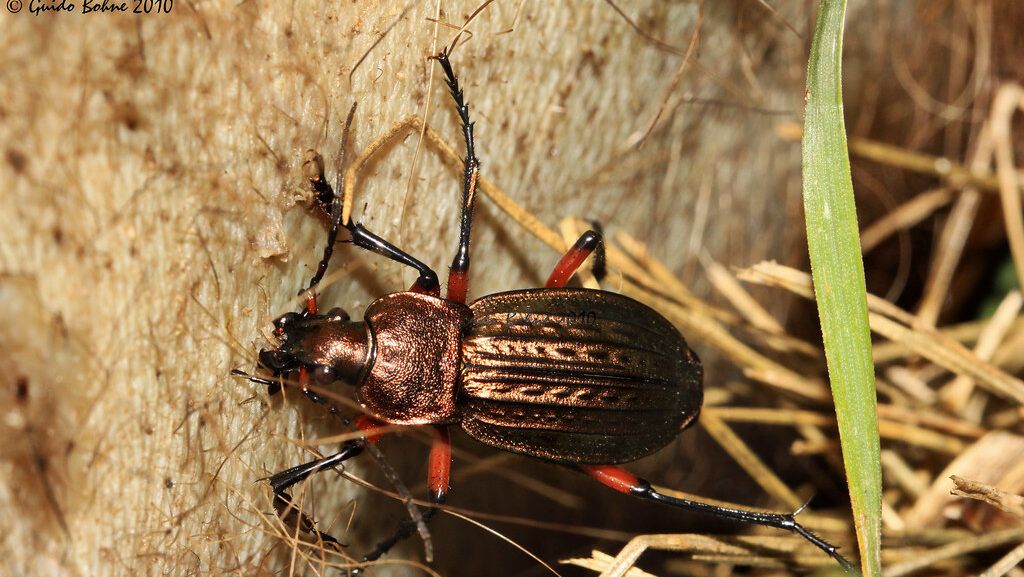
Ground beetles comprise a large family of beneficial insects that primarily hunt at night, making their contributions to pest control often overlooked by daytime gardeners. These dark-colored, fast-moving beetles spend their days hiding under rocks, logs, or garden debris, emerging after dark to feed on slugs, snails, cutworms, root maggots, and other ground-dwelling pests that damage plants. Many ground beetle species have flattened bodies that allow them to squeeze into tight spaces in pursuit of prey, making them especially effective at controlling pests that hide in soil crevices or plant debris. To encourage ground beetles in your garden, maintain areas of mulch, leaf litter, or ground cover that provide daytime shelter, and avoid disturbing the soil unnecessarily, as these beetles often lay their eggs in the top layers of soil. Reducing or eliminating the use of broad-spectrum insecticides is also crucial, as these chemicals kill beneficial ground beetles along with the target pests.
Hover Flies: Dual-Purpose Garden Helpers
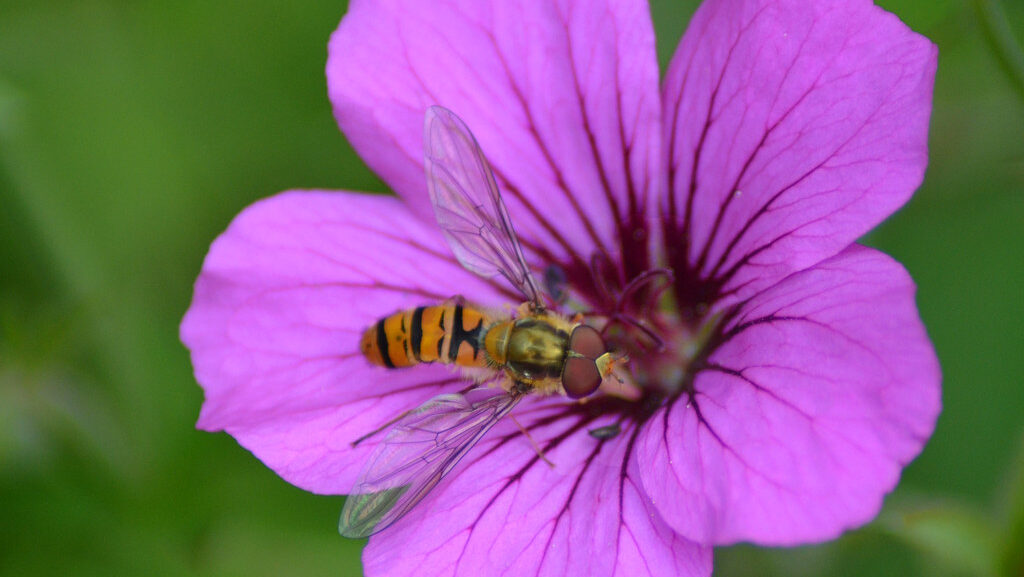
Hover flies, also known as syrphid flies, are exceptional garden allies that provide two distinct benefits: their larvae are voracious aphid predators, while the adults are important pollinators. These remarkable insects resemble small bees or wasps with their black and yellow striped bodies, but they can be identified by their distinctive hovering flight pattern and their possession of only one pair of wings instead of two. The larvae of many hover fly species can consume up to 400 aphids during their development, making significant contributions to controlling these common garden pests. Adult hover flies feed on nectar and pollen, visiting flowers and aiding in pollination similarly to bees, which is particularly valuable for crops like strawberries and raspberries that benefit from increased pollinator diversity. Plants with small, shallow flowers such as sweet alyssum, phacelia, and members of the carrot family are especially attractive to hover flies and will encourage them to lay eggs near aphid colonies.
Parasitic Wasps: Microscopic Garden Guardians
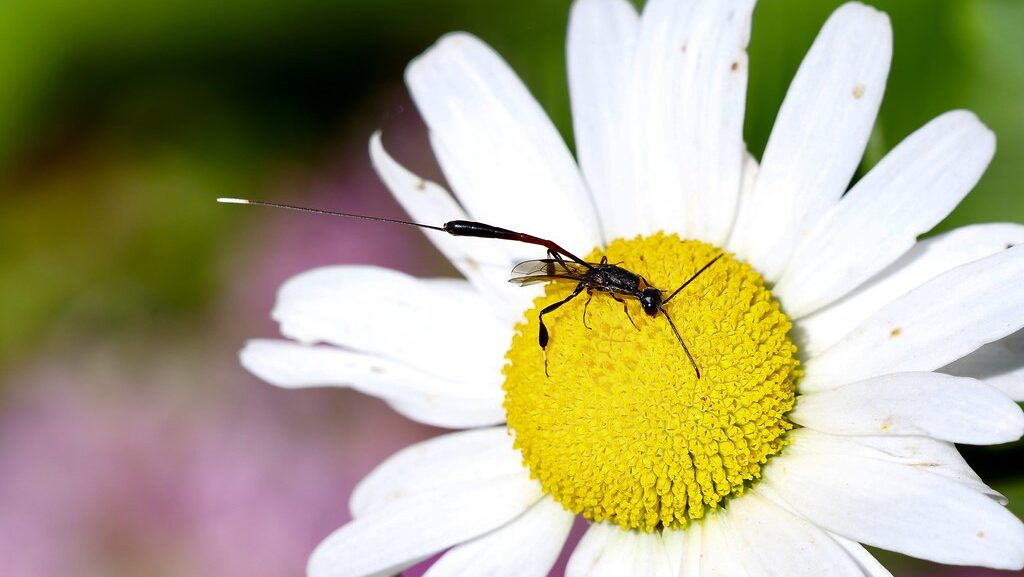
Parasitic wasps represent one of nature’s most sophisticated pest control mechanisms, though these tiny beneficial insects often go unnoticed in the garden due to their small size. Unlike social wasps that build paper nests, parasitic wasps are solitary and typically non-stinging, posing no threat to humans while providing tremendous benefits through their unique reproductive strategy. These specialized wasps lay their eggs inside or on pest insects such as caterpillars, aphids, or beetle larvae, where the developing wasp larvae consume the host from the inside out, eventually killing it. Different species of parasitic wasps target different pest species, with some specializing in controlling tomato hornworms, others focusing on cabbage worms, and still others parasitizing aphids or whiteflies. To attract and support these microscopic allies, maintain diverse flowering plants with small blooms like sweet alyssum, dill, cilantro, and yarrow that provide the nectar sources adult wasps need for energy.
Spiders: The Garden’s Web of Protection
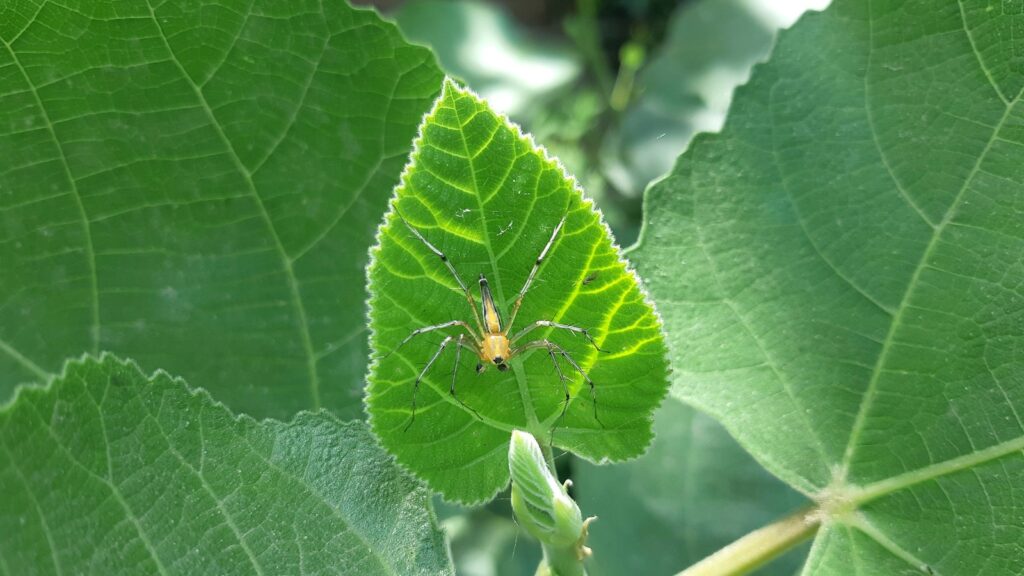
Though technically arachnids rather than insects, spiders deserve recognition as some of the most effective natural pest controllers in any garden ecosystem. These eight-legged predators employ various hunting strategies, from spinning elaborate webs to actively pursuing prey, collectively capturing enormous quantities of flying and crawling insects. A single garden spider can catch and consume dozens of insects daily, including many serious garden pests like flies, mosquitoes, moths, and beetles. Unlike many insect predators that target specific pests, spiders are generalist hunters that help control a broad spectrum of potential plant-damaging insects. Different spider species occupy different garden niches – orb weavers construct their distinctive spiral webs in open areas between plants, while jumping spiders actively hunt among foliage, and ground-dwelling wolf spiders patrol the soil surface. To encourage spider populations in your garden, avoid broad-spectrum insecticides and provide habitat diversity with groundcovers, mulch, and perennial plantings where spiders can establish territories.
Soldier Beetles: Versatile Pest Managers
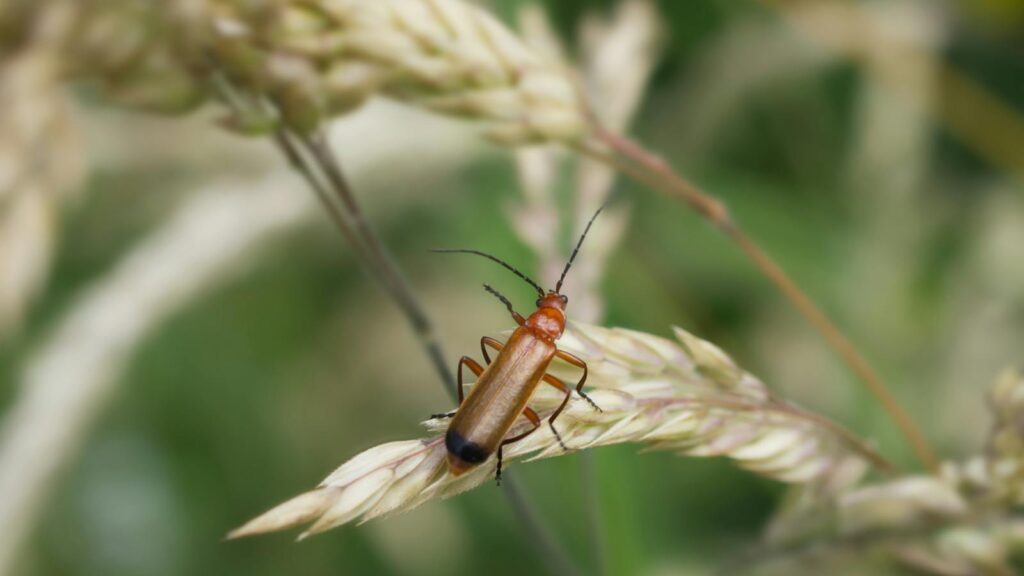
Soldier beetles, sometimes called leatherwings due to their soft, leathery wing covers, serve as versatile beneficial insects that change their dietary preferences throughout their lifecycle. Adult soldier beetles feed on small insects like aphids, as well as on pollen and nectar, making them both predators and pollinators in the garden ecosystem. The larvae stage is even more beneficial for pest control, as these soil-dwelling grubs actively hunt for eggs and larvae of destructive insects, including many that live in the soil and attack plant roots. With their elongated bodies and distinctive coloration (often orange or yellow with black markings), soldier beetles can be easily spotted patrolling flower heads in summer months. Goldenrod, asters, and other late-season bloomers are particularly attractive to soldier beetles and help retain these beneficial insects in your garden through the end of the growing season when their pest control services are still needed before winter arrives.
Minute Pirate Bugs: Tiny but Mighty Predators
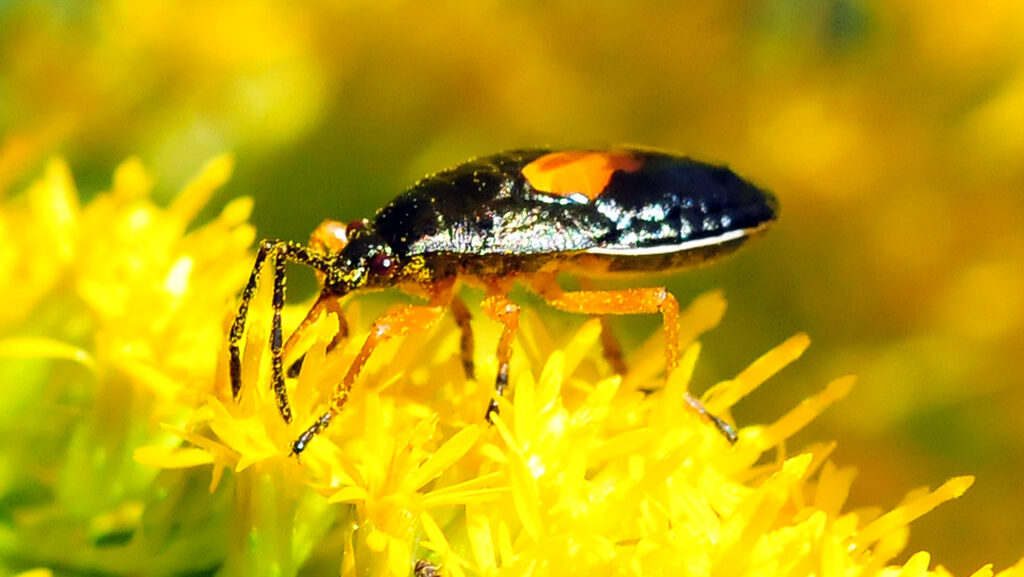
Despite their diminutive size of just 1/8 inch long, minute pirate bugs pack a powerful punch in the pest control department, earning them the apt scientific name Orius, which means “watchman” or “guard.” These tiny black and white predators feed on an impressive array of garden pests, including thrips, spider mites, aphids, small caterpillars, and insect eggs – many of which are difficult to control through other means. Minute pirate bugs are particularly valuable in gardens because they can detect and control pest populations before they become visible to gardeners, often preventing outbreaks before damage becomes apparent. Both nymphs (juveniles) and adults are predatory, consuming an estimated 30 or more spider mites per day, making them especially useful for protecting crops vulnerable to mite damage such as strawberries, beans, and cucumbers. To attract these beneficial insects, maintain diverse plantings that include flowering buckwheat, crimson clover, Queen Anne’s lace, and goldenrod, which provide the supplementary pollen these predators need when prey populations are low.
Tachinid Flies: Underappreciated Parasitoids
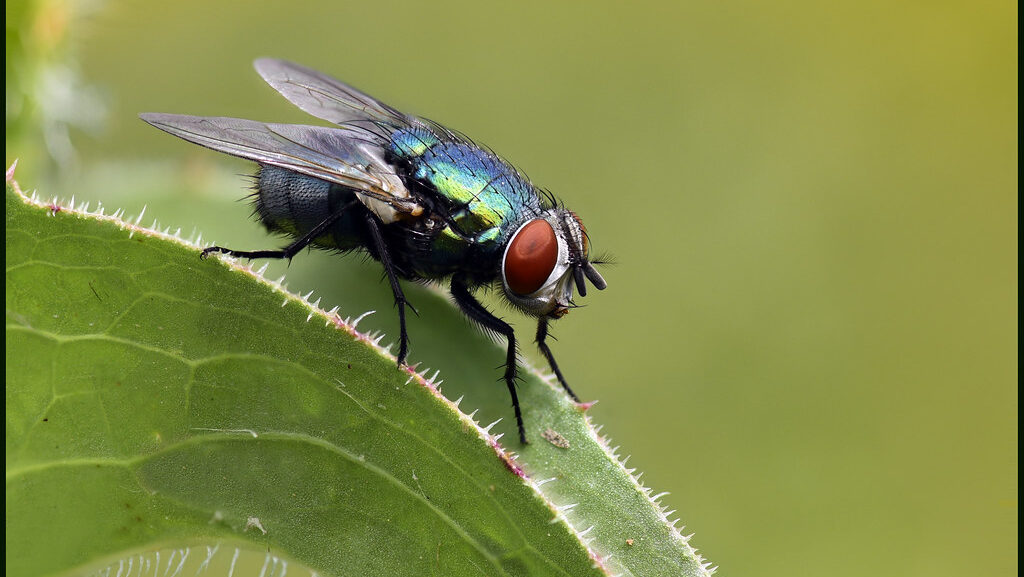
Tachinid flies represent a large family of beneficial insects that often go unrecognized despite their significant contributions to natural pest control in gardens. These flies resemble house flies but typically have bristly bodies and distinctive behaviors that set them apart from their nuisance-causing relatives. Adult female tachinid flies lay their eggs on or inside over 200 species of garden pests, including destructive caterpillars, beetle larvae, and stink bugs, with the resulting tachinid larvae developing inside the host and eventually killing it. Some species specialize in controlling specific pests, such as squash bugs, Japanese beetles, or tomato hornworms – all notoriously difficult pests to manage through other organic methods. To attract tachinid flies to your garden, plant members of the carrot family like dill, fennel, and Queen Anne’s lace, as well as other flat-topped flower clusters that provide the nectar sources adult flies need for energy between egg-laying activities.
Creating a Haven for Beneficial Insects

Attracting and retaining beneficial insects requires creating a garden environment that meets their basic needs for food, water, shelter, and reproduction. Diversity is the cornerstone of this approach – planting a wide variety of flowering plants that bloom in succession throughout the growing season ensures continuous nectar and pollen sources for adult beneficial insects. Include plants with different flower shapes and sizes, from tiny alyssum blossoms that attract hover flies to daisy-like compositions that appeal to ladybugs and lacewings. Beyond flowers, providing physical habitat is equally important – areas of undisturbed soil for ground-nesting insects, woody debris and leaf litter for overwintering, and diverse plant structures that offer hiding places from predators and harsh weather. Perhaps most critically, minimize or eliminate the use of pesticides, even organic ones, as these can harm beneficial insects directly or indirectly by killing their food sources. With patience and proper habitat management, your garden will gradually develop a robust community of beneficial insects that provides increasingly effective natural pest control.
Complementary Organic Pest Management Strategies

While beneficial insects form the foundation of an organic pest management approach, they work best as part of an integrated system that includes multiple complementary strategies. Cultural practices like crop rotation, proper spacing, and strategic timing of plantings help prevent pest buildup by disrupting their life cycles and creating less favorable conditions for their proliferation. Physical barriers such as row covers, sticky traps, and copper tape provide additional layers of protection for particularly vulnerable crops without disrupting beneficial insect populations. Soil health management through compost application, minimal tillage, and cover cropping creates stronger plants that naturally resist pest damage while supporting the soil food web that many beneficial insects depend upon. Occasional targeted interventions with botanical insecticides derived from plants like neem or pyrethrum can address serious pest outbreaks while causing minimal disruption to beneficial insect populations compared to synthetic chemical alternatives. By combining these approaches with beneficial insect conservation, you create a resilient garden ecosystem that maintains balance naturally, producing healthy crops with minimal external inputs.
By embracing beneficial insects as partners in your gardening journey, you’re not just controlling pests – you’re participating in an ancient ecological dance that has evolved over millions of years. These tiny allies work tirelessly behind the scenes, maintaining balance and contributing to the overall health and resilience of your garden ecosystem. As you become more familiar with these helpful creatures, you’ll develop a deeper appreciation for the complex web of relationships that make organic gardening both effective and rewarding. With time and careful stewardship, your garden will transform into a thriving habitat that supports both abundant harvests and the countless beneficial insects that help make it possible.
